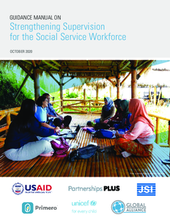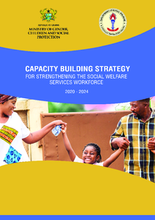Displaying 91 - 100 of 477
This webinar outlined key elements of good practice in supervision and tools that can be used for achieving quality supervision for social service workers.
The purpose of this manual is to offer guidance on supervision to individuals working to provide, manage or coordinate social services. This manual defines what is meant by supervision in social services, outlines the key elements of good practice in supervision and summarizes the different forms of supervision.
This podcast episode discusses the question: do child protection professionals have what they need to support and protect children as the coronavirus makes a comeback?
The study from Chile, Lithuania and Norway explores how social workers define family and more specific the position of extended families within child welfare and thus indicate contextual differences and similarities.
In this study on childcare staff in children’s homes of Kasaragod district of Kerala, the researcher adopted a descriptive design and selected all registered children’s homes for the study purpose.
Based on social welfare workforce assessment, a long-term capacity building strategy was developed to assist the Government of Ghana - specifically the Ministry of Gender, Children and Social Protection (MoGCSP) and the Office of the Head of Local Government Service (OHLGS) - to strengthen its social welfare workforce in order to respond appropriately to the needs of vulnerable and marginalized children and other populations in the country.
This study aimed to explore questions relating to caseworker’s training on ethnocultural diversity in connection with racial disparities and overrepresentation of Black children in child welfare services.
The purpose of this project was to determine if there were differences in learning outcomes between learners who completed child protection training in the usual delivery methods (Pre-COVID) and the fully virtual delivery methods (Post-COVID).
This qualitative study, conducted in four child and youth care centres in the Tshwane region of South Africa, presents some techniques used by child and youth care workers to develop belonging.
For this study, a review of research literature on the epidemiology of vicarious traumatization among child welfare professionals was conducted.


